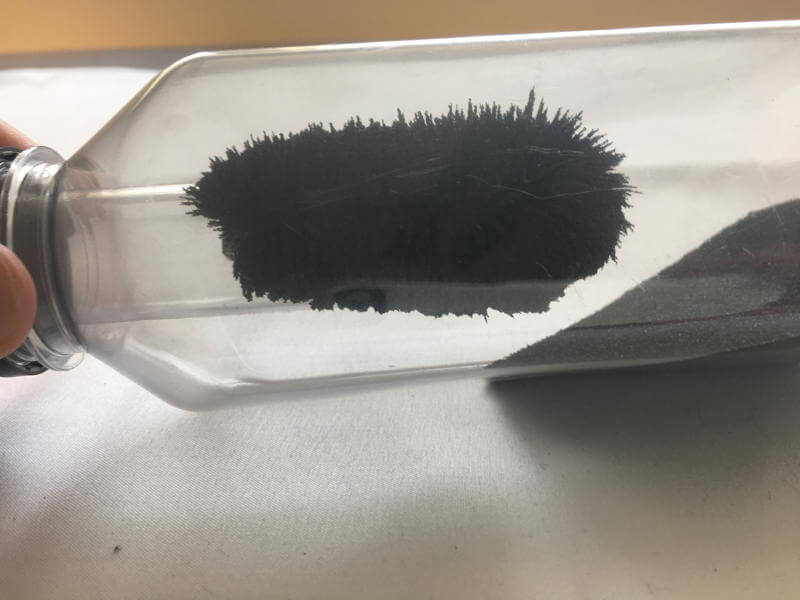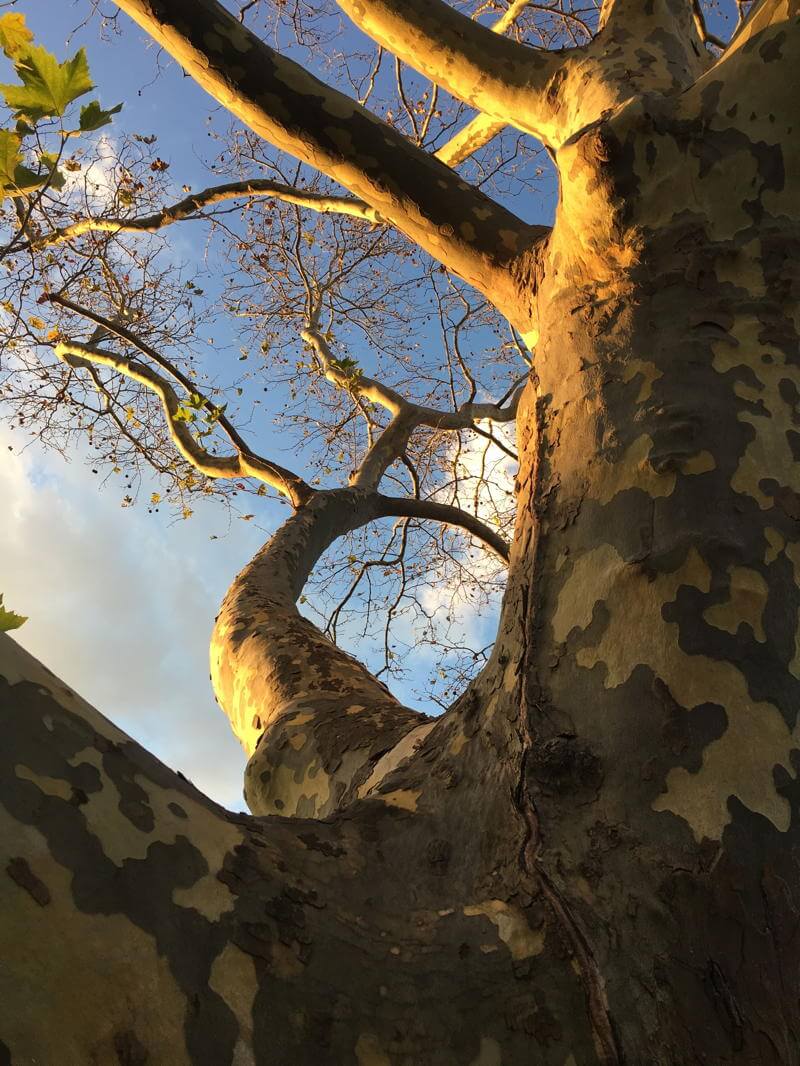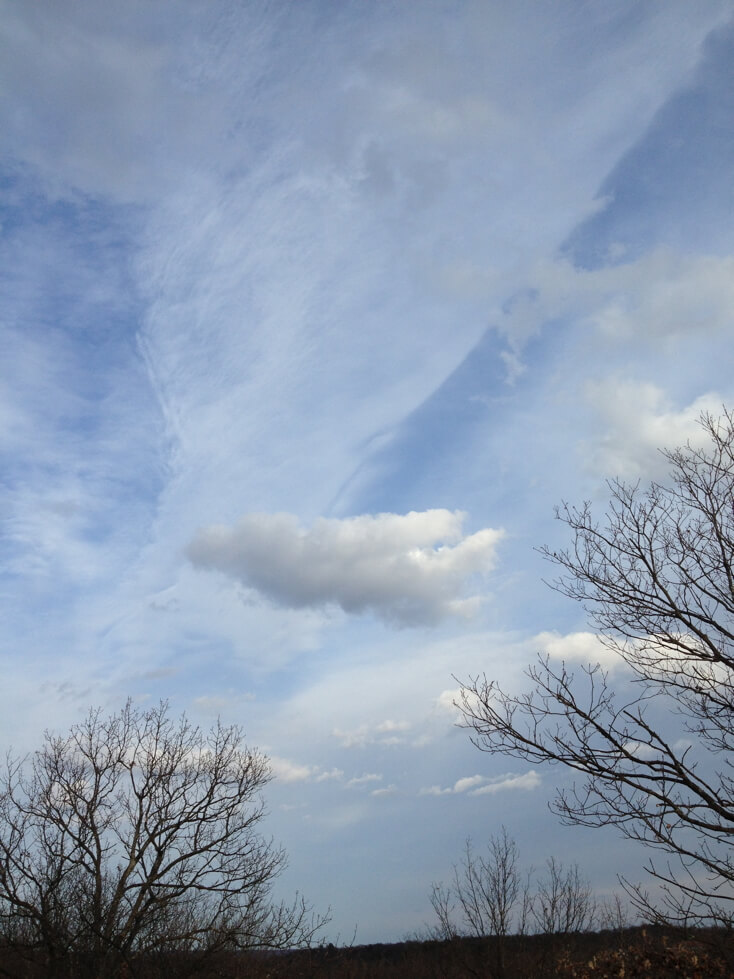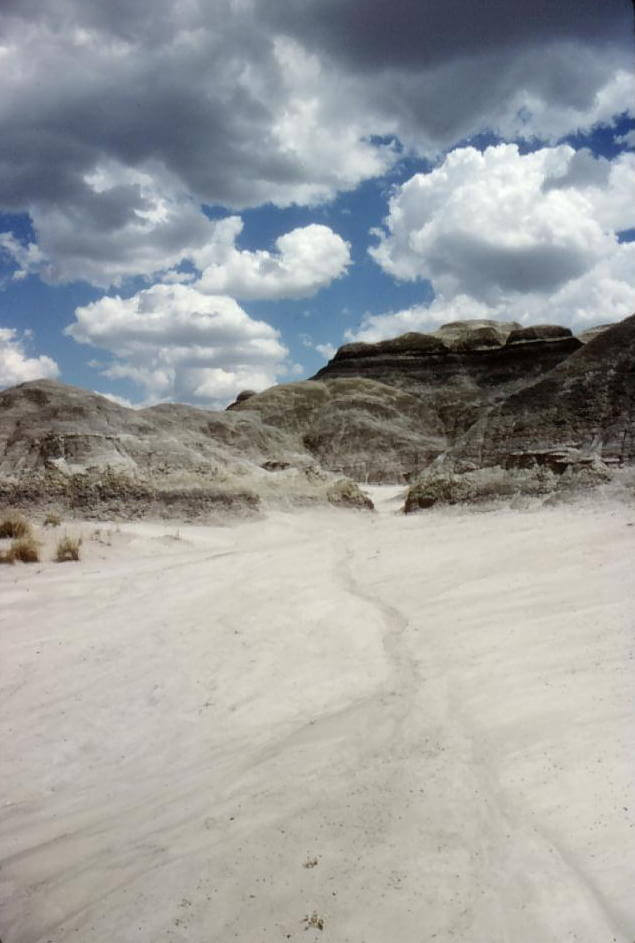Connect your Observing to Questioning or Learning
Improving Observational Skills
Each of us has a unique range of sensing capabilities. No one has the same strengths and limitations in how we take in information about our surroundings, and we haven’t considered how our brain uniquely processes all of the incoming data! Our brain’s processing adapts to the information captured by our senses, but it doesn’t run on autopilot. We can change our conscious focus on processing sensory data, allowing us to improve how we make observations. As with our learning, how we observe is unique. It would be best if you were an active driver in developing your observational abilities to see what works best for you.
Below are stories about:
- individual methods of observation,
- using observation in one’s career,
- teaching observational skills, and
- how one’s process of observation has changed over a lifetime.
Explore what others have written to think about your methods for observing, which is one of the best first steps to develop your skills, then write about your observation process.

Iron filings surrounding a magnet allow us to observe its three-dimensional magnetic field.
Write Your Story of Observing
Observing has many integrated parts – each influencing the other. Identifying how your methods of observation fit together will help advance your observational skills.
Take something that you feel you know rather well, and observe it again. Work by yourself at first, and if possible, then with one or two peers. Record your observations, and periodically group them to identify your methods of observation. For example, determine which sense you were using, when done, concept map, or write about your experiences. Concept mapping and writing are invaluable ways to clarify our understanding of something, in part because we need to identify how things fit together with actions.
Consider how the famous biologist, Louis Agassiz, helped one of his post-doctoral students to keep pushing himself to become a better observer. Even after earning his Ph.D., the person learned a new technique for observing: the art of comparing objects.
And Keep Studying
Practicing by yourself doesn’t always make perfect, which is why we have teachers, coaches, directors, and mentors to share their insights. But go beyond this, keep studying through courses, reading, lectures, workshops, TED talks, etc. The more you learn about the processes of observation, the more tools you can apply to the task at hand.
Methods of Observation
Explore a range of observing methods.
Jaina Cipriano, Set designer, Creative Director, and Photographer
Being a photographer requires you to be incredibly present, giving your attention to every detail. Your subject’s body language, clothing, hair, and expression. The way the light falls and the reaction between your scene and the settings on your camera. These are passive skills. The photography I do – hand building immersive and surreal sets to create cathartic and authentic images – is interesting because I cannot be passive, I must direct. To do this I had to train my brain to observe almost subconsciously, alerting me through my gut when something is off.
When I started photography, I gravitated towards it because it gave me a way to savor time and space while falling comfortably into the background. For years I created work this way, hidden in corners, capturing moments of unique magic in the lives of others. I knew it was time for me to change my approach when this work stopped feeling full. I needed to move from observation to integration. The years I spent in the shadows have strengthened my observational intuition so that I am now able to work bolder and brighter without losing myself inside.
Light is elusive, learning to see that which we use to see was a challenge for me. When it clicked, I stopped seeing color, lines or shapes. All I saw was light. It was the cutting edge of shadows, the curves of light, falling onto objects and separating the world. After a whole life of not consciously noticing it, it was now all I could see. It was awe-inspiring and stressful. As if I was suddenly seeing a color I did not recognize.
When I decided I wanted to design my owns sets I did not have any knowledge on construction. I immersed myself in environments where people were working with their hands and I silenced the ego part of my brain that yells “but I don’t understand” over and over and just watched. I knew if I could let enough information in eventually, I would be able to do this too.
I generally believe things are not as complicated or out of reach as we believe them to be. If we can allow our self the space to watch something new to us without judgement, then we can learn from it. This is the easiest tool I have to strengthen my creative process. Through observation, taking risks and allowing myself to fail I began to understand the basic skills I need to begin designing and building sets.
Keeping a journal is how I solidify what I have learned. It is a record of my experiences, where they lead to, what I think and how I felt as I was doing something new. The Moleskine brand notebooks come with this quote “I am not writing it down to remember it later, I am writing it down to remember it now.” Writing forces you to confront ugly truths and take yourself seriously. Without writing your observations can become passing thoughts that never stick their landing.
Creativity is not random. It is not something that just happens. You must work hard. It is not about where you get your ideas from, it’s about cultivating the space to allow them to arrive. Observation is my creative meditation.
Visit Jaina’s website.
John Pickle, Educator, Programmer, and Scientist
The Warm Up
When I warm up in basketball, I start shooting close to the basket to get my rhythm going. This builds my confidence. It is amazing how important it is to approach something with a positive mindset. When I view something I haven’t seen before, I step back to see less detail and ask “What components do I recognize?” As I identify a component, which could be as simple as what shape do I see or what is the dominant color, I ask “What does it tell me?” As more components are identified, I ask “How do these fit together?” By starting simple, I build my confidence and fall into the flow of observing more and more detail and building a story about how they fit together.
I start simple, stay positive, and build a story through more observations. But that is just the start.
Private Time with My Thoughts
Observations need time to process. It is impossible to see everything in one visit, and organizing observations and the ideas generated from them requires private time with your thoughts. This allows me to see gaps in what I know, which leads to new questions I want to explore with a new round of observations. The more times I revisit something, the more I observe over time.
Looking back sports often provided private time. During the time before practice or a pick-up game, I reflected on what I did that day, what I was learning, where was it going, what I was working on, and what challenged me. Lately, my private time with my thoughts is when I walk the dog. I look forward to my daily time with my thoughts.
Work with Creative, Observant People
As a scientist, working in small groups created an efficient and effective way for observations and ideas to be shared, merged, and grow. Much of the time would be spent working on our own components, but having people working toward a common goal on different components allowed us to share insights and experiences that helped each of us. The key was listening to each person’s contribution to a discussion.

Can observing the aesthetics of something help in observing other aspects of the object? Personally, it can since it can be a motivation to look at more detail.
Observing in Careers
Do our careers dictate how we observe or does how we observe influence our careers?
John Pickle, Educator, Programmer, and Scientist
Moving into the classroom was a shock to my senses. My previous jobs allowed time to think and process observations and ideas, so what the final work was correct. Deliverables were double and triple checked. In a classroom, I was immersed in every moment, taking in so much information about my students. Teaching for me wasn’t about conveying content; it was about helping each person develop skills and independence in learning. This type of support required getting to know each student as a person: their personality, learning strengths and challenges, motivations, comfort with taking risks, interests, confidence, resilience, independence, spatial abilities, methods of organization, and physical and emotional health. I was observing each person during class, while grading their work, and when running into them around campus. I monitored social dynamics in the classroom. Did students work well with each other? Did they contribute and engage in meaningful ways for each? Yes, knowing and planning what I teaching was important, but once in the classroom, the vast majority of time and focus were on my students.
During the school year, I developed a “teacher brain.” Changing my focus became routine, so working on long-term projects of my own became impossible. I wasn’t able to focus on one topic for more than an hour at a time. When summer came, I needed roughly two weeks to transition to the “project brain.” I was again comfortable focusing on a few things for extended periods. As a child, I played for hours with one toy or game. I fixed my bike, helped build our neighborhood treehouse, went on long bike rides and hikes, read books, drew, and played sports for hours. All developed my project brain. But looking back at my life in school, I was like my students: juggling many courses and extracurriculars — those who thrived needed teacher’s brains. Only later, when opportunities arose, my project brain re-emerged. Would students who don’t succeed in traditional schools fare better if they had the chance to focus and go deeper into topics, follow their questions, and use their project brains? One of my goals is that the activities at Science Pickle foster developing the project brain.

Snapshots are useful, but how did these cloud layers move? It is valuable to view in the present to consider how time might be involved.
Teaching Observational Skills
Sabrina Sadique, poet and English teacher, and John Pickle, science and math teacher, discuss how trying leads to memorable experiences essential for learning, observing, and pretty much every aspect of life.
Apologies for the Zoom delays in the video – John hadn’t overcome his WiFi issues, but the message still comes through, just with some out of sync soundtrack in the video at times.
Helping students go beyond the teacher.
John Pickle, Educator, Programmer, and Scientist
During a 5th-grade field trip, a scientist from the local museum walked us through the woods and shared that rocks had stories, and to learn what they were; we could use our observations. No memorizing was needed! This freedom was so exciting to be able to do real science by teasing out the information by answering my questions generated by my observations. I thought that memorizing rock names and formulas was boring, but learning that rocks could tell how the local landscape came to be over millions of years was what I longed to explore. This process, to me, was what science was all about – seeking to understand how things worked in our world. Learning the importance of observation gave me the keys to the kingdom!
Working in research every day felt like playtime. I loved seeing what new things we discovered, from the nearly insignificant ones to the soul-grabbing eureka moments — staying focused and alert at all phases of the work, from processing large data sets, analyzing it, visualizing patterns, and creating something new with the findings. In part, it was the freedom to explore with the responsibility to a team of colleagues that helped keep me motivated. I tried to replicate this in my classroom, curricula I helped create, and activities on this website.
In workshops and the classroom, I favor small group projects, challenges, and activities. Small groups without the teacher always present provides a sense of independence and a chance to communicate questions and ideas with each other. Questioning is a critical skill for becoming a keen observer. Listening to and sharing ideas is also essential for expanding our thinking about how we observe.
The best activities are ones that don’t have a right or wrong answer but instead require supporting their ideas/conclusions with reasoning. Learning is about the process, not the solution. I often start a course with the mystery box or the puzzle activities (solving a spatial logic puzzle but then making one of their own). This activity introduces that we were going to focus on the process of scientific exploration during the course. During hands-on exercises, I roam the room, listen to questions and ideas, occasionally join a conversation, but I always resist sharing my opinion or giving an answer. I smile, shrug my shoulders, and encourage them to find a way to work toward answering their questions.
I was lucky enough to co-mentor my school’s inventing club, DEMONs or Dreamers, Engineers, Mechanics, and Overt Nerds, in which we designed and built things for clients within the school (teachers, theater productions, sports teams, clubs, etc.). We worked in small groups, and the client’s feedback was our final assessment. This self-structured process provided a perfect way for students to develop their observational skills as they worked on every phase of the project: interviewing the client to learn of their needs, designing, planning, reviewing with the client, building, testing, and delivering to the client. And it was fun!

In the desert, more rock and sediment are visible compared to forested or snow-covered landscapes (below) making it easier to observe the geology.
Observing Over a Lifetime
Observing leads to growth, and growth leads to new ways to observe. What happens over decades?
John Pickle, Educator, Programmer, and Scientist
While I was in school, I focused on science and math, which helped me develop my spatial observation skills and my passion for numerical data. Looking for patterns and meaning in data are critical components in these disciplines. As a hobby, I loved photography, which allowed me to explore aesthetic observations. When I started using aerial photography in my field geology courses, I realized photographs captured immense amounts of data.
When I went into the U.S. Air Force, I realized that I didn’t know how to observe people very well. I had focused on extending my observations through logic, and this didn’t often apply to human behavior. People confused me, and my framework for observing made them even more confusing. My military training and service helped me develop skills in working with (i.e., observing) people.
Although I worked as a research meteorologist after the Air Force for ten years, I realized I liked working with people as well. When the company’s CEO offered me a chance to work on an education project with NASA’s Jet Propulsion Laboratory (JPL), Harvard University, and Boston University, I jumped at the opportunity. After the project, she asked me if I wanted to continue to develop education projects for the company. I found that education provided a chance to use all of my observation skills while working with people in this way. I realized geology had a relatively long time scale to verify my observations, meteorology a relatively quick time scale, and education had a range of time scales from immediate to the duration of the course and beyond. I loved being focused in this way, continually processing varied feedback on people’s confusion, motivation, excitement, focus, challenges, and successes.
After 9/11, I left research and went to work at the Museum of Science in Boston. I worked with incredibly creative educators, and they helped me transition from “talking in data” to “talking in stories.” I had to break away from communicating as a scientist to delivering as most people do. This transition changed how I worked as an educator, and although the website emphasizes working with data, I try to bring in stories as often as I can.
Throughout my life, I have expanded my skills in observation through working with and talking with creative people. The key for me was talking with people, where we share ideas back and forth. Being spoken “at” does not impact much growth on either of us. The person doing the talking isn’t reflecting deeply about their process, and the person listening doesn’t have a chance to verbalize their ideas.

Connect your Observing to Questioning or Learning
Topics in Observing
- Our Senses and Brain
- Perspective,
- Technology,
- Measurement,
- Data, Graphs, and Functions
- Function Transformations
- Contouring, and
- Improving Observational Skills.
Measure your:

0 Comments